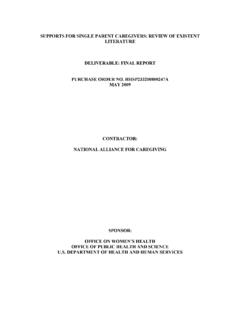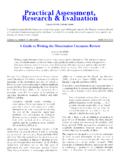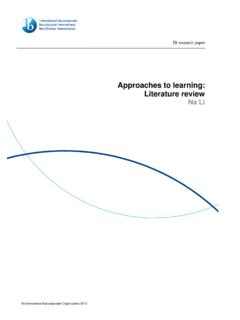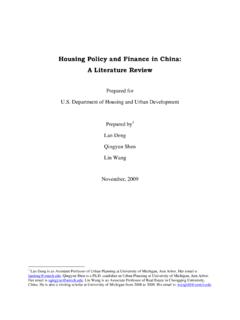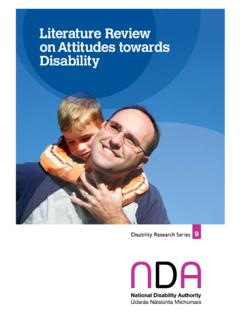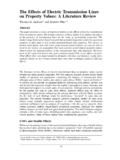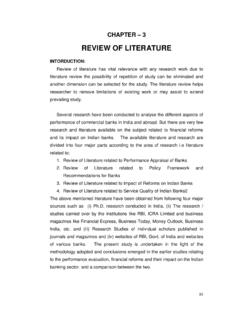Transcription of Vaccination in Humanitarian Emergencies: Literature review ...
1 Vaccination in Humanitarian emergencies : Literature review and case studies Part I: Literature review 1. Introduction Humanitarian crises and emergencies are ubiquitous and frequently unpredictable in time and location. However, with increasing awareness of populations and regions at risk, responses to such events are becoming more and more systematic and better organized. Apart from attending to the immediate need for emergency medical care, food, shelter and access to water and sanitation1, preventive public health measures are looked upon as critical issues for consideration as response to a Humanitarian emergency. One such measure is the potential use of vaccines against vaccine preventable diseases. A systematic review of Literature was carried out to collate existing guidelines, analyze key factors and methods involved in the consideration of Vaccination during emergencies .
2 The expectation from such an exercise is to improve our understanding of current recommendations in emergency manuals as well as relevant recent field experiences concerning the use of vaccines in Humanitarian emergencies . The systematic collation and analysis of such information would be helpful in the development of future decision making framework for use by persons planning and implementing immunization programmes within a larger package of interventions during the acute phase of an emergency. A rapid scan of the Literature showed that no such systematic reviews existed regarding the use of vaccines in Humanitarian emergencies . An initial broad-based review of the Literature of existing guidelines and experiences in the use of vaccines in Humanitarian emergencies was conducted and shared at the preparatory working group meeting on 20-21 September 2011. Subsequently, a more refined review of the Literature was undertaken searching the following databases - Medline, Embase, CAB abstracts for articles published from January 1, 2000 to week 3 October 2011 using the OvidSP interface.
3 Search terms included keywords and medical subject headings describing the concepts of [ Vaccination ] AND [ Humanitarian Box 1: Search terms [ Vaccination ]: Immunization [MeSH] Immunization Programs [MeSH] OR immunization OR Vaccination [MeSH] OR Mass Vaccination [MeSH] OR mass campaign OR supplemental immunization activities OR Immunization campaign [MeSH] OR Vaccination campaign OR vaccine OR Vaccines [MeSH] [ Humanitarian emergencies ] : Humanitarian OR Humanitarian emergency OR relief work [keyword and MeSH] OR forced displacement OR mass population displacement OR emergencies [keyword and MeSH] or complex emergency OR refugee camp OR Humanitarian assistance OR disaster-affected OR crisis-affected OR refugees [keyword and MeSH] OR refugee* OR displaced population* OR disaster* OR Disasters [MeSH] OR natural disaster emergencies ] (Box 1). A trial search for similar document before 2000 did not yield anything different. Therefore, the search was limited to post 2000 Literature only.
4 The findings of this expanded review were collated and shared at the second working group meeting on 17-18 February 2012 Box 2. Summary of the findings and conclusions of the Literature review This Literature review revealed varied and non-standardized criteria used by organizations to plan and implement Vaccination in emergencies . Very little data is available to evaluate the process of how decisions are made and assess the impact of Vaccination in the wider public health landscape of an acute Humanitarian emergency. Although decision making process was not described in the vast majority of the Literature reviewed, most considered certain criteria when planning and implementing Vaccination in emergencies . In general the phases of emergency in which Vaccination is considered is vague and inconsistently defined. The most prominent considerations towards a decision to vaccinate are practical aspects such as cold chain, logistics, implementation feasibility, human resources, vaccine availability to name a few.
5 Epidemiological issues such as risk assessments were considered important, but often the decision to vaccinate or not preceded the risk assessment. Vaccine characteristics appear to be the least considered. Reports of Vaccination in emergencies state factors under consideration for planning and implementation, but the weighting or analysis of the information and how it all feeds into the final decision is generally missing. Guideline documents offer recommendations of which vaccines are and are not appropriate in an emergency context, but do not offer a comprehensive method of evaluating and prioritizing public health interventions in the field. Experiences of Vaccination in emergency settings offer no further insight into how guidelines are interpreted or used in decision making. Political considerations often outweigh objective evidence in the decision making process to use or not to use vaccines in Humanitarian emergencies . Ethical considerations are not well captured in this review .
6 There is little guidance or experience noted on how organizations manage decisions when needing to resolve prioritization of interventions, targeting high risk groups, equity, and informed consent. There is a clear need for a framework to ensure a standardized and consistently applied methodology for decision making. The use of such a framework would minimize excess mortality, maximize resources, reduce wastage, ensure equity, and ultimately improve accountability to the population at risk and other stakeholders. Tools being developed require input from key agencies for a feasible, pragmatic approach to this challenge. 2. The search result From the search 80 documents (38 guidelines & 42 experience documents) were deemed appropriate for inclusion in the analysis (see Fig 1.) Data was extracted into Excel spreadsheet prepared for information analysis; a guide was also developed to ensure consistency in the recording and analysis of information.
7 Fig. 1. The search result (a) Results of Guidelines review Measles is most often recommended, and is well accepted as a priority health intervention in emergencies8,13-16. Simultaneous introduction with other antigens is not generally recommended, but campaigns can include polio Vaccination where outbreaks or threats to eradication programs exist1,6,14,17 and tetanus Vaccination for all those with open wounds16,18,19, or pregnant women20. Vitamin A supplementation is almost universally recommended for implementation during a measles Vaccination campaign. Where measles is recommended, vaccine coverage or needs assessments are also recommended to determine specific age ranges for targeting. Coverage rates of less than 90% for those under 15 years old are given as a qualifying criteria for recommendation of immediate mass immunization7,16,19, however, in none of the documents is it specifically recommended that measles Vaccination campaign can be delayed if estimates of pre-emergency Vaccination coverage rates exceed a threshold, for example 90%.
8 With respect to the phase of the emergency in which vaccines are recommended for implementation, the only vaccines reliably and consistently recommended for introduction immediately were measles, polio, and tetanus (for people with open wounds). Of the vaccines considered for diseases with epidemic potential, three are recommended only after the outset of an outbreak: hepatitis A; meningococcal meningitis; and yellow fever, while measles and polio are both recommended preventatively and after the start of an outbreak, and cholera is not recommended after the start of an outbreak. The documents that recommend polio Vaccination preventatively during an emergency, also address the potential threat to an eradication programme1 or are specifically recommended for a region in which polio outbreaks are a risk 6. Vaccines for tetanus, pertussis, and diphtheria are generally not recommended for mass Vaccination campaigns, and rather should be implemented through routine immunization programs when conditions stabilize.
9 Influenza and typhoid vaccines are generally not recommended at all during emergencies , regardless of the phase. Prevention of meningococcal meningitis outbreaks in sub-Saharan Africa with the use of a new meningococcal A conjugate vaccine, implemented proactively prior to the start of an outbreak, may be considered in the future. The new vaccine was introduced in parts of the African meningitis belt in December 201021. The search criteria used for this review did not produce any documents in which Vaccination to prevent meningococcal meningitis outbreaks are recommended or performed proactively in an emergency context. Routine immunizations through national expanded programme for immunization (EPI) services should be reinstated as soon as conditions stabilize, and may indeed be one indication of a rehabilitating health system2. Crisis conditions and risk factors for diseases listed were generally indicative of the emergency context, and not necessarily specifically related to the disease being recommended for Vaccination .
10 Table 1: Summary of recommendations for Vaccination in emergencies by type of vaccine-preventable disease and organization VPD (VACCINE) ORGANIZATION SUMMARY OF RECOMMENDATIONS CRISIS CONDITIONS FOR RISK FACTORS FOR DISEASE RECOMMENDED TIMING OF Vaccination RELATIVE TO EMERGENCY ONSET Cholera (OCV*) WHO11,12,14,22 UNHCR20 UNICEF8 IFRC7 IAP 2 US CDC23 The use of OCV in emergencies continues to be under dispute7. The UNHCR and UNICEF recommend seeking expert advice20 and considering the use of OCV under the most recent evidence-based guidelines8. The use of OCV should be assessed in light of other public health priorities and other priority interventions11,12,22. It is not recommended for use after the start of an epidemic 22. Risk assessment and decision making tool has been developed and requires field validation 11,22. Under some circumstances, for example in Haiti after the 2010 earthquake, it was not recommended4, and the CDC does not recommend OCV for evacuees following a disaster23.










